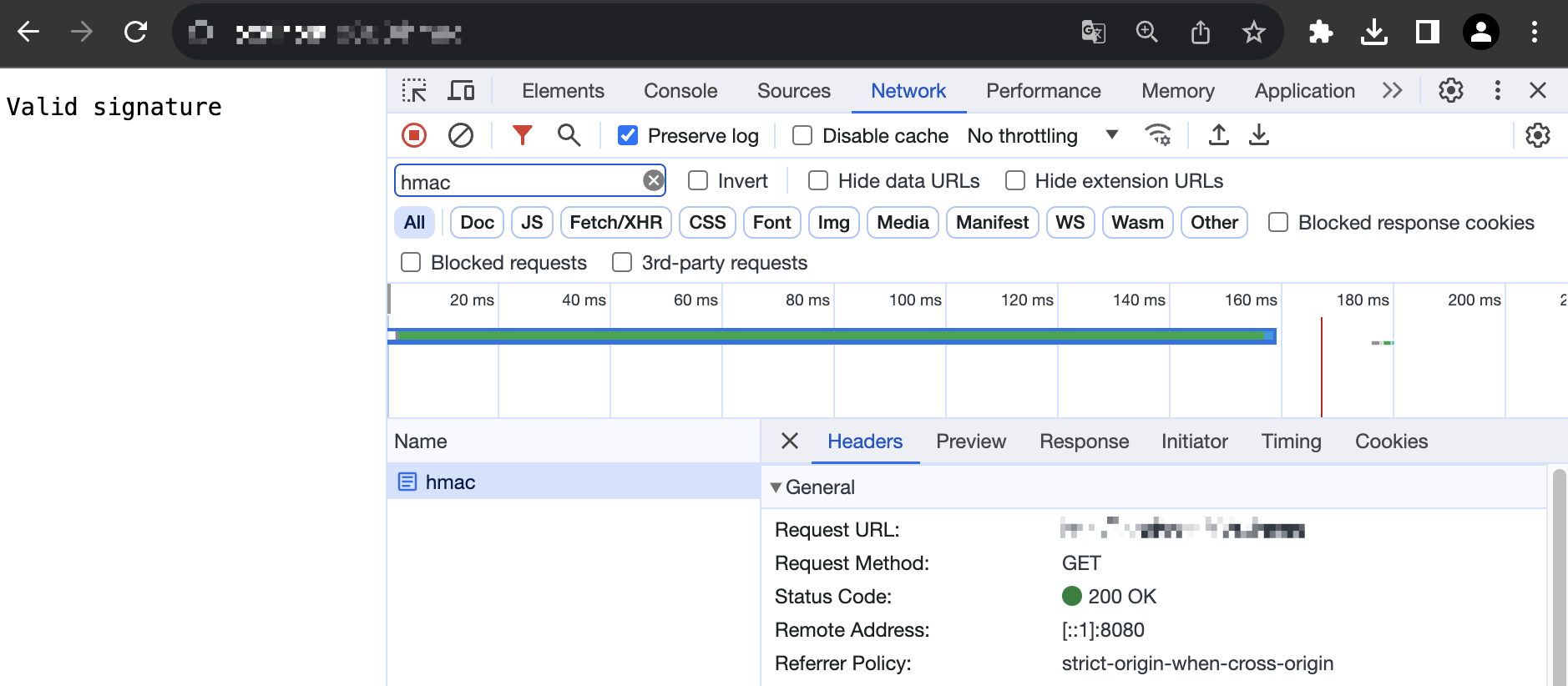HMAC Digital Signature
Hash-based Message Authentication Code (HMAC) is a kind of message authentication code based on hash function, mainly used to verify data integrity and identity authentication.
Web Crypto API is used in this example to achieve HMAC-SHA256 signature and store the signature information in a request header. It achieves data integrity or identity authentication collaborating with origin server. Developers can modify the code based on their specific needs. Note
Cooperation with the origin server is required in this example, which means that the origin server must possess the corresponding signature verification algorithm.
For live network use of the code provided in this example, modification must be made in accordance with the comments.
Sample code
function uint8ArrayToHex(uint8Array) {return Array.prototype.map.call(uint8Array, x => ('0' + x.toString(16)).slice(-2)).join('');}async function generateHmac({ secretKey, message, hash }) {const encoder = new TextEncoder();const secretKeyBytes = encoder.encode(secretKey);const messageBytes = encoder.encode(message);const key = await crypto.subtle.importKey('raw', secretKeyBytes, { name: 'HMAC', hash }, false, ['sign']);const signature = await crypto.subtle.sign('HMAC', key, messageBytes);const signatureArray = new Uint8Array(signature);return uint8ArrayToHex(signatureArray);}async function handleRequest(request) {const secretKey = 'YOUR_SECRET_KEY';// Please modify the message to the information that needs to be signed, generally a combination of various data, such as timestamp and relevant request information.const message = 'YOUR_MESSAGE';// Choose one from SHA-1, SHA-256, SHA-384, and SHA-512 for hash.const hmac = await generateHmac({ secretKey, message, hash: 'SHA-256' });request.headers.set('Authorization', `HMAC-SHA256 ${hmac}`);return fetch(request);}addEventListener('fetch', event => {event.passThroughOnException();event.respondWith(handleRequest(event.request));});
Sample Preview
Enter a URL (such as
https://example.com/hmac) that matches the trigger rule of edge function in the address bar of a browser on both the PC and mobile terminal to preview the example effect.Identity verification failed.

Identity verification succeeded.
